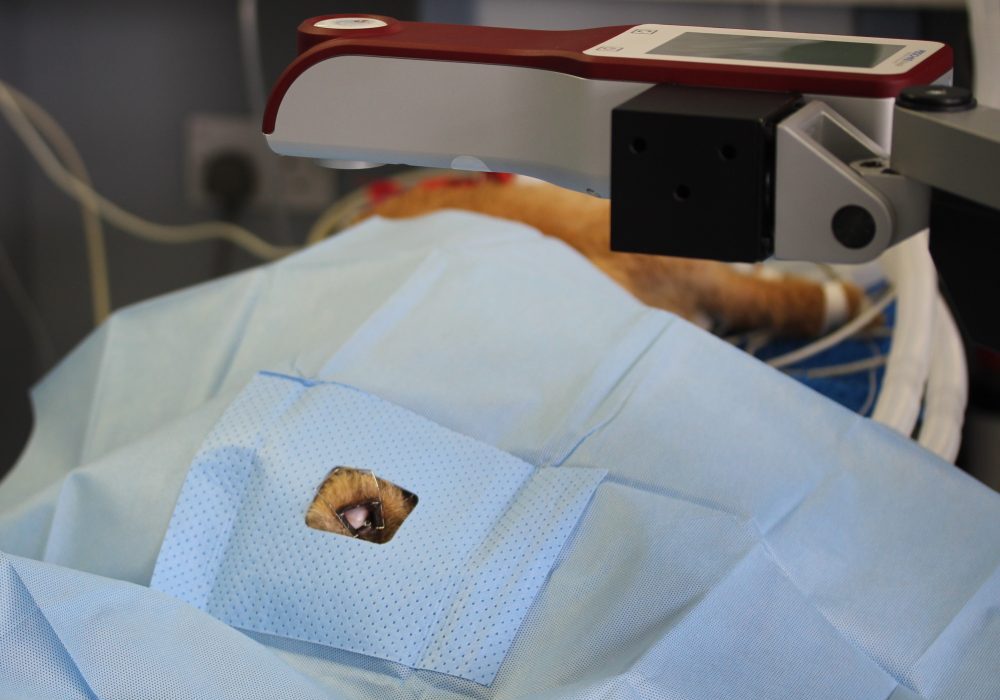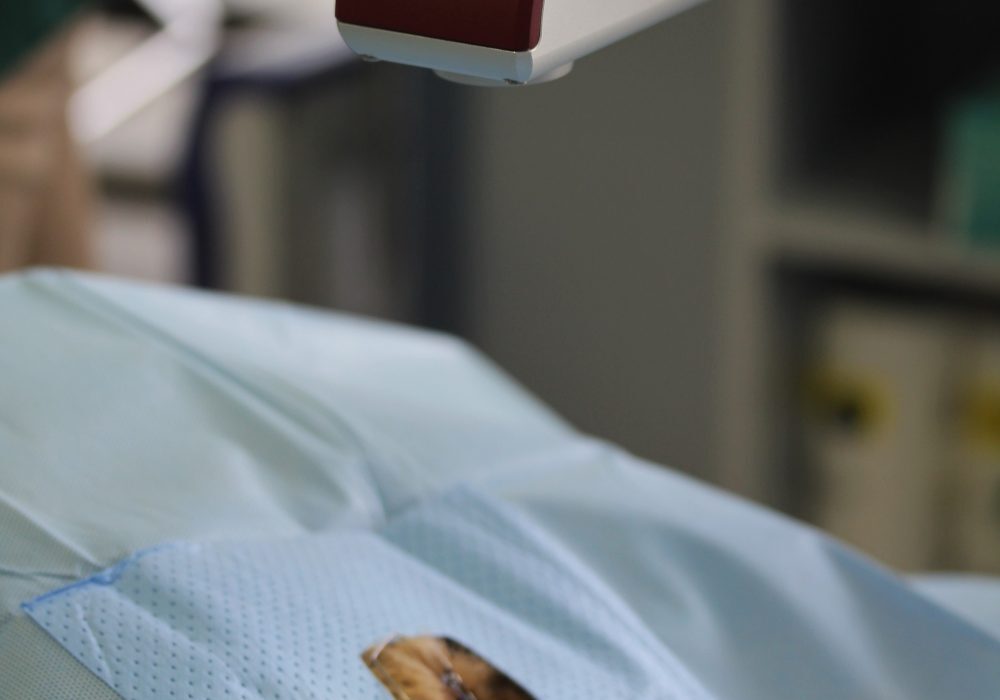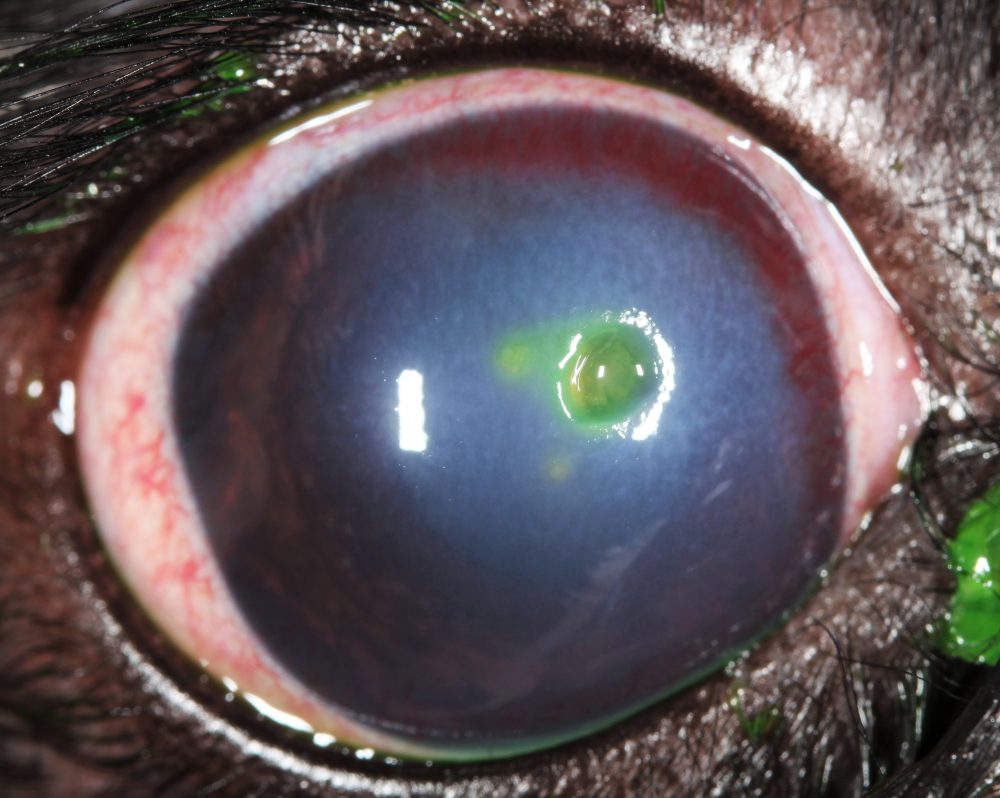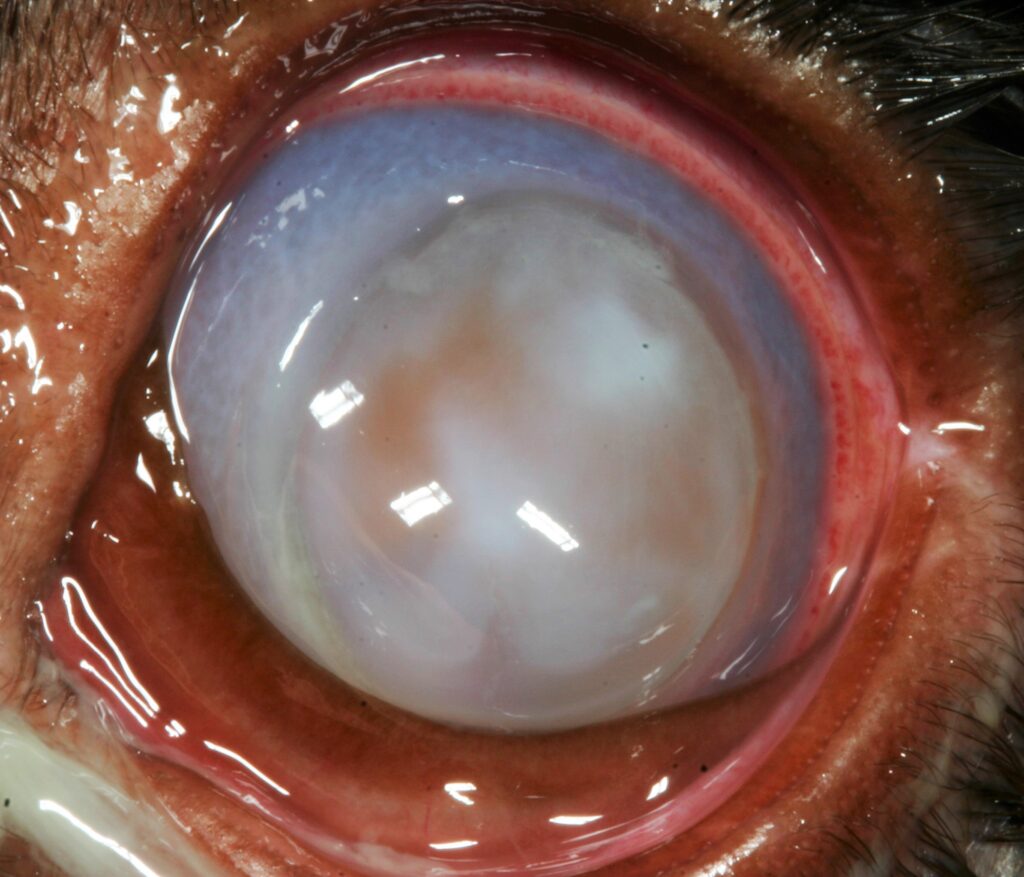Why Should I Bring my Pet to Willows for Treatment of Corneal Ulcers?
Willows is one of Europe’s leading small animal referral centres. Our state-of-the-art hospital is led by internationally renowned Specialists, committed to providing the highest standards of veterinary care. Our Ophthalmologists are supported by our multi-disciplinary team of Specialists across a number of disciplines including; Anaesthesia, Diagnostic Imaging and Emergency and Critical Care.
Our Surgeons are supported by a highly trained and caring team of Veterinary Nurses including a dedicated Ophthalmic Nurse, all of whom play a vital role in the recovery and management of patients 24 hours a day, every day of the year to provide the best possible care for your pet.
What is Corneal Cross-Linking (CXL)?
Corneal cross-linking (CXL) was developed in the late 1990s in human Ophthalmology to treat different corneal diseases that can cause clouding, distortion, scarring and eventually blindness. With development of CXL in recent years, studies and reports have found its use to be effective in veterinary medicine.
How Does it Work?
The cornea (the clear “window” at the front of the eye) is formed of collagen fibres. CXL aims to increase the number of bonds between these fibres improving the biomechanical and biochemical stability of the cornea. This is achieved by exposing the cornea to ultraviolet (UV-A) light encouraging these bonds to form. CXL not only makes the cornea firmer and more resistant to the action of bacteria but also has an antimicrobial effect “killing” these infectious bacteria.



What are the Most Common Causes of Complicated Ulcers?
Infectious and non-infectious corneal ulcers are a common condition and can occur frequently in certain breads with a predisposition such as short headed and flat faced dogs (i.e. Pugs, French and English Bulldogs, etc).
Infectious corneal ulcers are typically caused by secondary bacteria, or less frequently a fungal infection, that triggers corneal stromal destruction. Different simultaneous underlying problems such as low corneal sensation, tear film deficiencies and/or eyelid abnormalities can further weaken the cornea and act as contributing factors delaying the corneal healing.
Fig 2: Stromal corneal ulcer


What are the Signs of a Complicated Corneal Ulcer?
Patients affected with a corneal ulcer often experience pain and close their eye in a similar way to a person squinting. The patient’s eye may appear red or cloudy with some discharge and possible decreased vision.
Fig 3: Infectious melting corneal ulcer
What can I Expect if my Pet is Treated for Corneal Ulceration with “Corneal Cross-Linking”?
Following this procedure most patients will be stay in hospital for 24-48 hours to enable close monitoring of the patients response to the procedure. Medical treatment with topical antibiotics, eye lubrication and systemic anti-inflammatories will be necessary after the corneal melting process/infection has been arrested by using CXL, in order to allow the cornea to fully heal.
Once the corneal ulcer has healed further treatment of the remaining corneal inflammation may be required in order to further minimise the scarring, allowing for a better visual outcome.
When is Corneal Cross-Linking Required?
Complicated corneal ulcers can progress and deepen quickly and are potentially vision and eye threatening, as such aggressive therapy is often required. Corneas treated with CXL become stiffer and more resistant to infectious agents.
Several studies have highlighted the effectiveness of CXL in reducing the corneal melting (i.e. disintegration of the cornea) in companion animals. This technique may also become more important in the near future with drug-resistant microorganisms becoming an increasing problem.
Until recently, the most common therapy for progressive complicated deep ulcers has been intensive medical treatment or in more severe cases surgical corneal grafting procedures.
Whilst appropriate case selection of which ulcers are treated medically or surgically, this technique may be a beneficial adjunctive therapy to medical treatment allowing the cornea to heal without surgical intervention. This could result in a better visual outcome (by reducing the degree of corneal scarring).
To save this page as a PDF, click the button and make sure “Save as PDF” is selected.
Ophthalmology
Find out more
To assist owners in understanding more about Ophthalmology we have put together a range of information sheets to talk you through the some of the more common conditions seen and treated by our Specialists.

